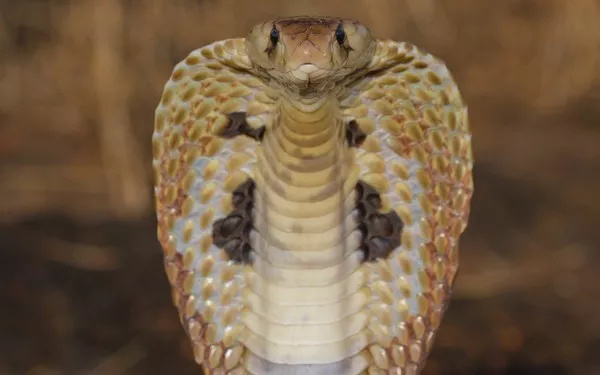Ball pythons (Python regius) are carnivorous reptiles, and in the wild, they primarily feed on small mammals, such as rodents. In captivity, offering a varied diet that meets their nutritional needs is essential for the health and well-being of these fascinating snakes. While rodents are the most common food source for ball pythons in captivity, there are alternative diet options available. In this article, we will explore various feeding options besides rodents and their suitability for ball pythons.
The Importance of a Balanced Diet
Before discussing alternative feeding options, it’s crucial to understand the nutritional requirements of ball pythons. In the wild, their diet mainly consists of rodents like mice and rats, which provide the necessary nutrients, including proteins, fats, vitamins, and minerals. In captivity, it is essential to replicate this balanced diet to ensure the snake‘s health and proper growth.
A well-balanced diet contributes to a healthy immune system, proper organ function, and overall vitality. Therefore, offering a variety of prey items is beneficial for providing a complete nutritional profile for your ball python.
Alternative Feeding Options
While rodents are the primary food source for ball pythons, there are several alternative options that can be considered:
1. Birds
In the wild, ball pythons have been known to consume small birds. Offering appropriately sized and nutritionally suitable birds, such as quails or chicks, can be an alternative food option. It’s essential to ensure that the birds are sourced from reputable suppliers and are free from any chemicals or contaminants.
2. Guinea Pigs and Rabbits
Some ball python owners have successfully fed their snakes guinea pigs and rabbits. These larger prey items should be offered as occasional treats, rather than a regular diet, due to their higher fat content. Make sure to adjust the frequency and size of the prey items to avoid overfeeding and potential health issues.
3. Reptile-Specific Diets
There are commercially available reptile diets formulated to meet the nutritional needs of snakes. These diets typically come in the form of frozen and thawed prey items, such as reptile-specific sausages or patties. While they can be a convenient option, it’s essential to carefully read the ingredient list to ensure they contain the necessary nutrients for ball pythons.
4. Fish
Some ball python owners have experimented with offering fish as a food source. While fish can provide essential nutrients, it’s essential to be cautious about the types of fish offered. Fish should be freshwater species without any bones, and they should be free from any seasonings or additives.
5. Insects
Insects can be an alternative food option for ball python hatchlings or juveniles. Small insects such as appropriately sized crickets or mealworms can provide a varied diet. However, it’s crucial to note that insects alone may not provide a complete nutritional profile for adult ball pythons.
Considerations for Alternative Diets
When considering alternative feeding options for your ball python, there are several important factors to keep in mind:
1. Nutritional Balance
Ensure that the alternative food items you offer provide a balanced nutritional profile. The diet should include essential nutrients like proteins, fats, vitamins, and minerals necessary for the snake’s overall health.
2. Size Appropriateness
Choose prey items that are an appropriate size for your ball python. The size of the prey should be roughly equivalent to the snake’s girth, allowing for proper digestion and minimizing the risk of regurgitation.
3. Calcium and Vitamin D3
Ball pythons, like all reptiles, require adequate calcium and vitamin D3 for healthy bone and shell development. If the alternative diet does not naturally provide these nutrients, you may need to supplement the snake’s diet with calcium and vitamin D3.
4. Frequency of Offering
While alternative food options can add variety to your ball python’s diet, it’s essential to offer them as occasional treats rather than the primary food source. Rodents should still form the bulk of their diet due to their balanced nutritional composition.
5. Individual Preferences
Each ball python is unique, and individual preferences for food items may vary. Some snakes may readily accept alternative food sources, while others may be more reluctant. Be observant of your snake’s behavior and adjust the diet accordingly.
Consulting a Herpetologist or Veterinarian
Before introducing alternative food items into your ball python’s diet, it’s advisable to consult a herpetologist or a reptile-savvy veterinarian. They can provide valuable guidance on the nutritional needs of your snake and help you determine the suitability of alternative prey items.
A veterinarian can also conduct regular health check-ups to ensure that your ball python is thriving on its chosen diet. Regular monitoring of your snake’s weight and body condition is essential to assess the effectiveness of the diet plan.
Conclusion
While rodents remain the primary food source for ball pythons in captivity, offering alternative food items can add variety to their diet and potentially enrich their feeding experiences. Birds, guinea pigs, rabbits, reptile-specific diets, insects, and certain fish can be considered as supplementary food sources.
However, it’s crucial to prioritize the nutritional needs of your ball python and ensure that any alternative food items offered provide a balanced diet. Regular consultation with a herpetologist or reptile veterinarian is recommended to make informed decisions about your snake’s diet.
Remember, a healthy and well-fed ball python is more likely to thrive in captivity and bring joy to its owner for many years to come. Responsible pet ownership, backed by sound nutritional knowledge, will undoubtedly contribute to the overall well-being of these mesmerizing reptiles.
Related Topics:


























